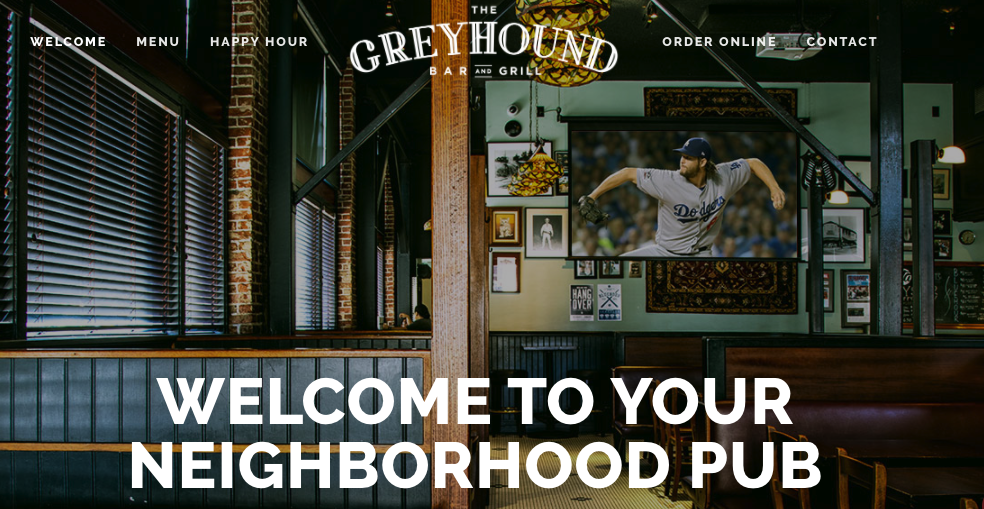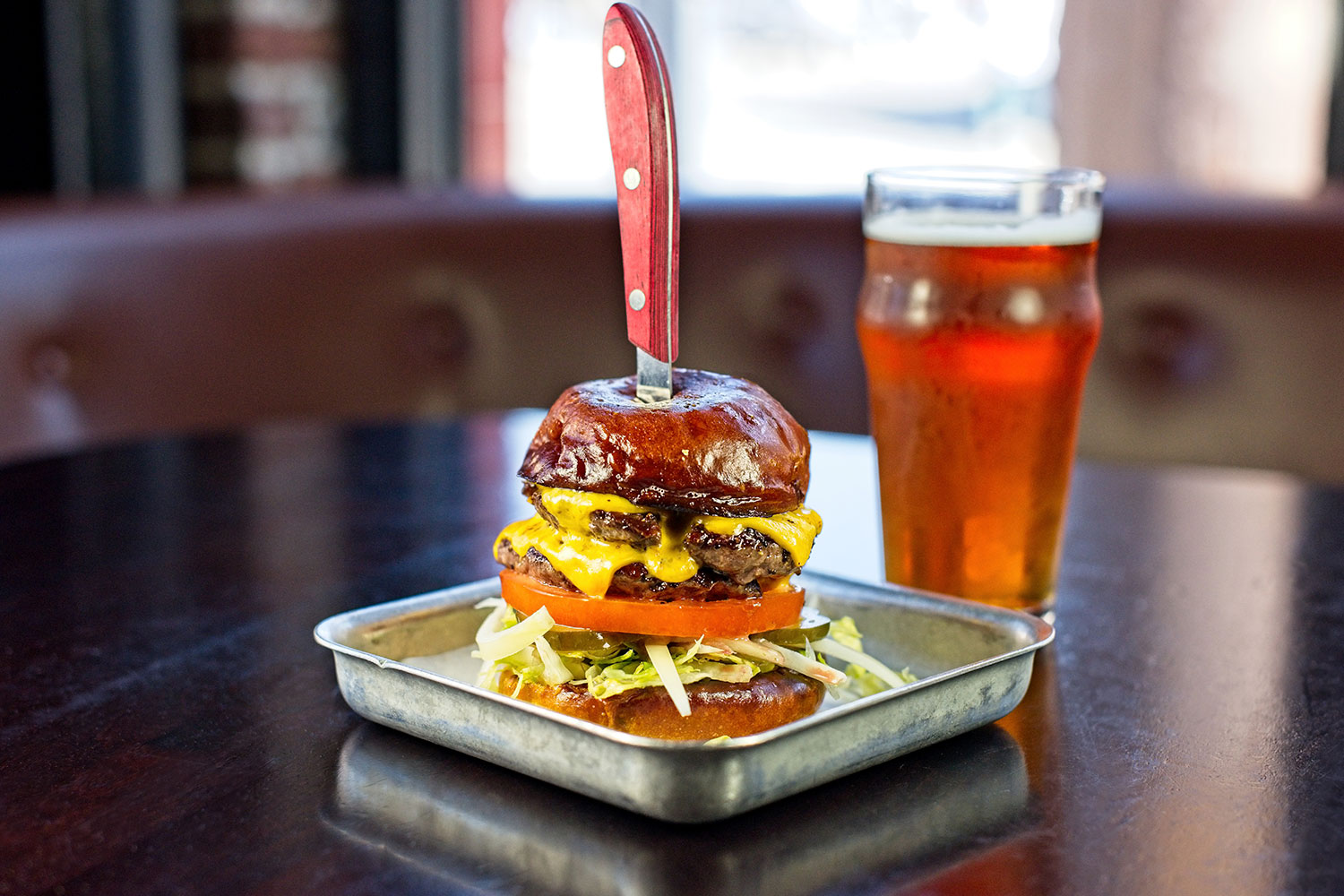[This brutally honest viewpoint below is by co-proprietor Mateo Glassman and it hits close to home to this writer, an LA Spurs supporter and frequenter of the Greyhound Bar & Grill in Highland Park our local Los Angeles venue to view all Tottenham Hotspur matches — they’ve set up a GoFundMe page to help support their presently unemployed pub staff, and perhaps other establishments should do likewise.]
“So, I've seen a lot of my Facebook people posting about the fears and anxiety about the time ahead, but not much specifics. I know a lot of your are sitting home, bored, quarantined, running out of episodes of Peaky Blinders or Welcome Back, Kotter, so if you'd like a bit more explanation of what's so scary, I made this. I want to say, this is not about pity or self-sorrow; it's just the facts, Jack.
“During this unprecedented moment, we keep seeing calls from businesses for help, from the government, from the private sector, from the ether. There is a common desperation among small business, particularly those in the food & beverage sector, that seems to be one of the only consistent messages throughout this entire moment. The sense of urgency appears greater, the fear appears more acute, the message appears to be the only thing in modern discourse that remains apolitical. I thought this was a good time to explain, from the business’s side, why this is happening and what exactly makes this unique for restaurants.
“A restaurant works like any other business in that it brings in sales and spends costs. When you subtract costs from sales, you get profit. This is an entirely typical and easy to understand formula that is not remotely unique to restaurants. What is unique is the margin with which a restaurant makes a profit. The profit margin, or the percent of gross sales that ends up as the net profit, for the average business is around 10%. While this is a wildly general number (some industries run closer to a 50% margin), for the most part, when you see a storefront, or an office, or an online trinket merchant, you can expect that they are, on average, running a 10% margin (that is, earning .10 for every $1 earned) If they’re going really well, they may be running a 20% margin (that is, earning .20 for every $1 earned). But for restaurants, you can just about cut that number in half.

“An average restaurant (or bar, or deli) can hope for about a 5-6% margin on average and a really good one can hope for 10%. Yes, there are businesses in the food and beverage industry that can run at a 20% or higher margin, but these are white whales. These are the businesses that all of the other businesses study in TED talks to try to understand how to excel. In fact, while 5-6% might be the average, because of the seasonality and competition tied to the industry, what you can really expect is 8-9% during your busy months, and 1-2% during your slow months, essentially breaking even. Another way to think about this is that when you go to eat; it doesn’t matter if it’s a $9 sandwich or a $75/person prix fixe with wine and dessert, for every dollar you spend, you can expect the restaurant to clear about .05 cents of that dollar. The point is that almost every restaurant you go into is running on a razor thin margin, just barely breaking even.
“Wondering where that .95 cents went? A lot of places. The first two big ones are called prime costs: Labor and Cost of Goods Sold, or COGS. Labor is the sum of all the payroll, taxes, benefits, and free staff meals for a given period. When you factor in salaried employees like chefs, managers, and sommeliers, the percentage of total sales allocated to labor is usually between 30-40%. COGS is the sum of the costs of all of the raw product that goes into the sales. This includes food (meat, dairy, grocery, produce, seafood) as well as beverage (beer, wine, liquor, non-alcoholic). This percentage differs from restaurant to restaurant, but as a general rule, you can expect this number to be between 25-30%.
“So, right off the bat, of the dollar you spent at a restaurant, .55-.70 cents of it is already gone to prime costs. For the rest, consider everything else that goes into running a business: rent, utilities, insurance, uniforms, linens, janitorial, repairs & maintenance, travel, office supplies, operating supplies, and on and on and on. When it all adds up, about 95% of the money you spend at a restaurant, the restaurant spends within the next month. And that little detail, the “within the next month” detail is where the sense of urgency comes from.
“Restaurants buy supplies, food, beverage, etc. from vendors on credit terms. What this means is that the vendor will drop off the delivery as well as an invoice, and the business has X amount of days to pay that invoice. Most terms with most vendors are called Net 30, or thirty-day terms. This means that the business has thirty days from the delivery date to pay the invoice. Some vendors will offer Net-14 or Net-7 or some other terms to collect their money, but for the most part, we pay for what we bought about thirty days after we receive it. What this means is that a lot of restaurants have bills to pay this week and next that reflect the sales they made during the last weeks of February. And to remind you, during the last weeks of February we hadn’t really slowed down yet.
“Now, a strong healthy business probably shouldn’t be relying on sales in March to pay invoices from February; and trust me, we don’t start doing so. But eventually, ovens break, hoods leak, booths wear and tear, TVs go out, and a rainy week can destroy sales all at the same time and all-of-a-sudden, you’re borrowing against next month’s sales. Every single restaurant does it and, as long as you make that money back in the next few weeks, no one ever gets stung. Is this best practice? Of course not. Ideally, you’d set aside the money for the stuff you’ve already purchased; but the unfortunate realities of the business mean that sometimes it’s just not that easy.
After that, you add in labor. For businesses whose payday is this Friday 3/20, you’re paying your labor from 3/2 – 3/15. That week of 3/2, at least for us, was actually above average. So, we scheduled normally like everyone did. But now it’s time to pay that. Two weeks later.
“So now, here’s the situation: Over the next nine days, restaurants are going to owe on all of the goods that they bought in the last week of February, pay for all of the labor that they scheduled for the first two weeks of March, pay sales tax on all of their sales from the month of February, owe several thousand dollars for insurance payments, electricity, gas, water, trash, cable, internet, and credit card processing. If anything breaks, we have to fix it.
“To put this even more in perspective: if a restaurant grosses around $50,000 each week, they can expect to have around $60,000 in payments due for labor and cost of goods alone in the next nine days. They have a $20,000 sales tax bill due next Tuesday. They likely owe close to $6,000 for insurance and thousands of dollars for everything else. This does not count rent, loan payments, or other things that we just can’t simply pay right now. Basically, this hypothetical $50k/week restaurant owes close to $100,000 to various sources in the next nine days, which is normal and fine and easy when you’re bringing in $50,000 each week, but right now we are not earning any sales. So, unless they have saved up a few weeks’ worth of sales for a rainy-day Pandemic fund, every food & beverage business owner you know right now is running around looking for answers.
“And that’s the situation we’re in. I haven’t discussed long-term things like retaining staff, repaying loans, and of course paying ourselves. These questions need answers too, but for now, we have these very difficult questions to answer and not a lot of time to do so. This is the situation that the vast majority of family-owned restaurants are in right now.
“Bear in mind: this is not a pity party for any of us. One thing about this industry is the sense of camaraderie and family in this business and we are all in this together. We all love our staff and our community and our vendors and our investors; and we all love each other. We all are doing, and will continue to do, what is necessary to support our sisters and brothers and make sure that we can hang in for as long as we need to. It’s just time to dig in.
“Good luck to everyone and keep your chins up!”—Mateo Glassman—The Greyhound.

Mateo Glassman — Enough to be driven to drink.
Once again, we suggest other restaurants set up their own GoFundMe page to support their staff, but drop in on the Greyhound on Facebook and its GoFundMe page, if you’d care to help.








Leave your comments
Post comment as a guest